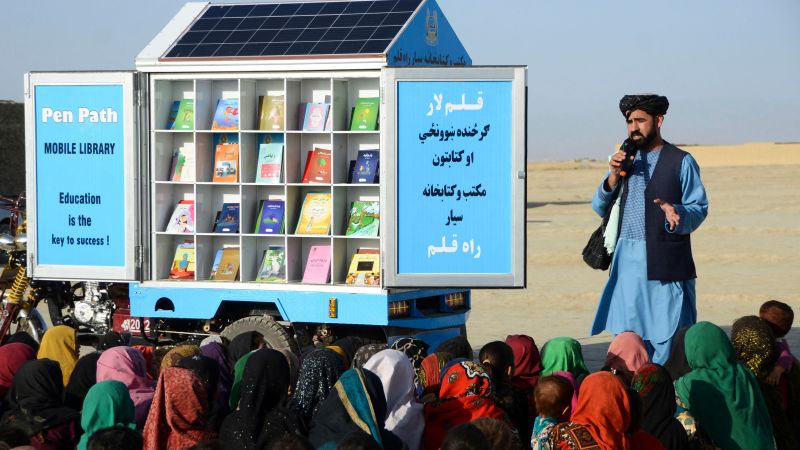
Recently, I interviewed a DoorDash driver named Britni Duwii for a story about the dangers of extreme heat. Britni worked in Mesa, Ariz., which, at the time, was under a weeks-long heat advisory. The average temperature in July was a blistering 110 degrees Fahrenheit. Sometimes, Britni told me, she had to endure long shifts in her car with the air conditioner broken. Heat would exhaust her so much that she would often pass out on the couch as soon as she got home from work. She knew heat was dangerous (exhaustion is an early sign of heatstroke), but she simply couldn’t afford to miss work.
She isn’t the only person facing this dilemma. Heat is now the deadliest weather effect in the U.S. It kills more people per year than hurricanes and tornadoes combined. Last year, the Centers for Disease Control and Prevention reported at least 1,710 heat-related deaths, and researchers have consistently found deaths increase on extreme heat days. In 2019, one study found 1,373 additional deaths could be attributed to extreme heat days in the U.S. each year. In July, another study estimated that last year there were 60,000 heat-related deaths in Europe.
This summer, many people died across the nation while doing everyday tasks in the heat: gardening, walking and delivering mail. The anecdotes and data show how risky heat is, but also how people, governments and corporations tend to not take its risks of harm as seriously. As climate change makes heat waves longer and stronger, we must find new ways to communicate their dangers. The National Weather Service needs to reconsider its stance on naming or ranking extreme heat, the same way it does with hurricanes.
The debate over whether to name heat waves has been going on for several years. Some skeptical scientists say, because heat waves vary in length, intensity and geography, classifying them will create an enormous administrative burden. They also say the temperature is relative—heat risk depends on how much a city, and even a person, can adapt to heat. For instance, while 94 percent of homes in Arizona have air conditioning, only 53 percent of homes in Washington state do, so the risk of heat-related illness can vary across states even if the weather conditions are the same.
But some researchers are already working on classifying heat waves based on a city’s weather and mortality data. In my view, we need clearer guidelines precisely because of how unequal heat risk is; whatever the standard ends up being, giving a heat wave a name or a number tells people that this is weather they need to take seriously. People tend to underestimate how dangerous heat is, so without the alert that a ranking gives, I worry that people with greater privileges will dismiss the heat’s health risks and ignore the people struggling to withstand it.
People living in warm climates often disregard heat-related health hazards since they believe they are used to extreme weather. Although older people have less capacity to regulate their body temperature, surveys have shown they don’t fear heat any more than do younger people. Peter Howe, an environmental social scientist at Utah State University, told me two types of people die from heat stroke: those with underlying conditions that make them vulnerable to heat, and healthy people in risky situations, like those working outdoors.
Although heat waves are destructive, they don’t leave massive and immediate trails of debris in the same way a tornado or hurricane does. Nevertheless, the U.S. could end up spending tens of billions more per year for road maintenance and replacement as a consequence of high temperatures.
Categorizing heat waves, whether by name or number, could transform the way we think about heat. It could help us differentiate between the regular weather forecast and weather conditions that put our lives and economies in danger. A category system would be easier to understand than the traditional heat index measure, and each category could also offer some guidance on which activities should and shouldn’t continue under given weather conditions, like with the air quality index.
Changing how we communicate heat risk might make corporations more accountable for protecting their employees, instead of claiming, as some have done, that it is up to individual employees to know when to stop working in extreme heat. Scientists have consistently found people with low resources are often aware of heat’s risks since they are often struggling with it. But understanding dangerous weather conditions doesn’t mean much if you can’t choose to stay safe. This gap between understanding heat risk and avoiding it became crystal clear in the summer of 2022 when a video of a UPS driver collapsing in the heat and then finishing a delivery after a few moments went viral. After this happened, UPS told reporters that its drivers were “trained to work outdoors and for the effects of hot weather.” But UPS would never say its drivers are “trained” to work outdoors and for the effects of a tornado.
Besides being an invisible weather disaster, heat is also a long-term hazard, and some researchers worry naming heat waves would put too much emphasis on extraordinary heat events instead of on the chronic effects of heat, which can be just as dangerous. “I have been working in communities that have had significant health impacts from heat but did not have extreme heat waves,” says Olga Wilhelmi, a geographer studying extreme heat risks at the National Center for Atmospheric Research.
But changing how we communicate heat risk might also give us an excuse to keep talking about heat’s long-term hazards. We could address these “acute emergency challenges” and also keep working to address heat’s long-term effects, Kurt Shickman, the former director of Extreme Heat Initiatives at the Adrienne Arsht–Rockefeller Foundation Resilience Center, told me. The center has been working on naming and classifying heat waves. Its researchers have found, for instance, that people are more likely to remember heat waves when they have been named.
The heat we experienced this summer was the most relentless in our history, and chances are things will keep getting worse. Heat is not a reason to put on shorts and eat ice cream anymore; it has become a credible life threat, especially to the most vulnerable members of our communities. The way authorities talk about heat urgently needs to reflect that change.
This is an opinion and analysis article, and the views expressed by the author or authors are not necessarily those of Scientific American.







